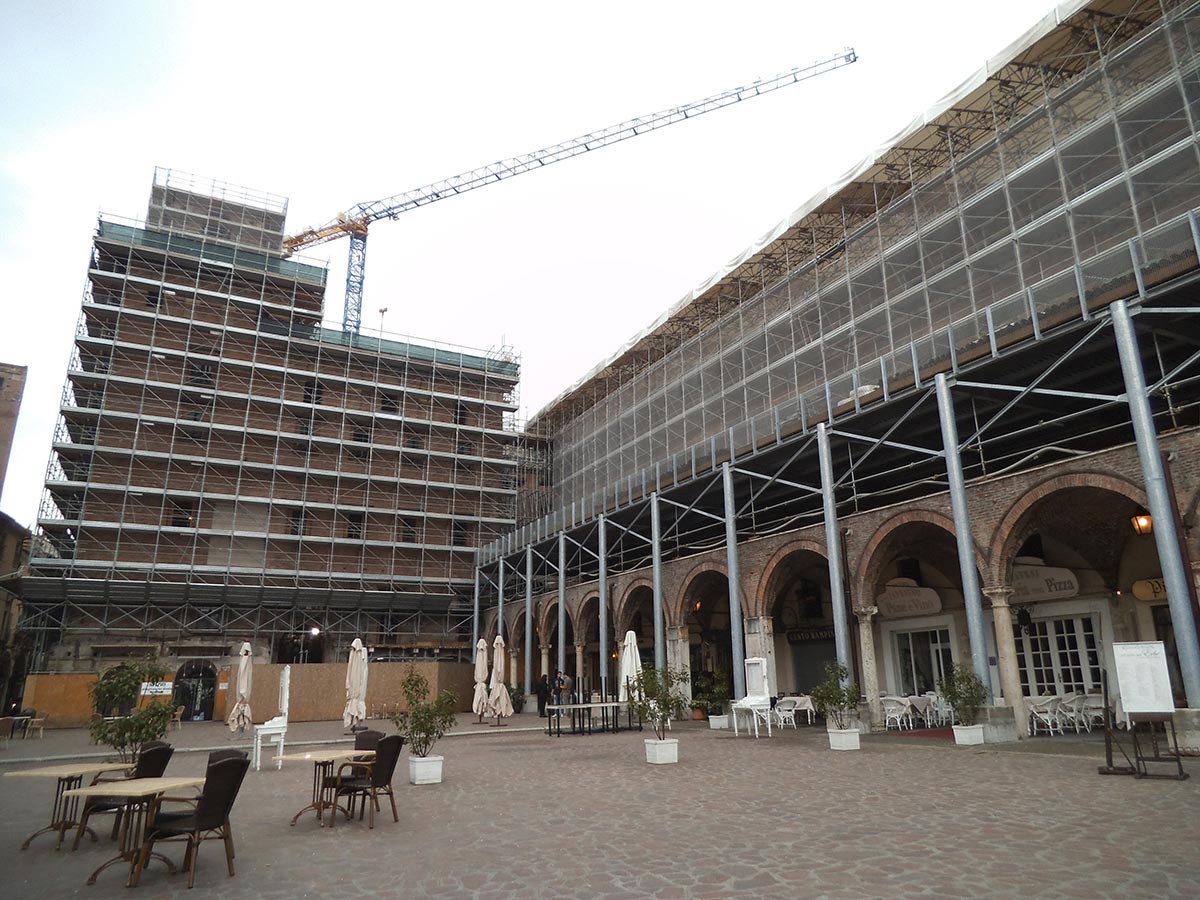The structural safety of the Palazzo della Ragione is part of a wider project of renovation and restoration of the historic buildings in the city centre of Mantova, most of which were damaged or severely compromised by the seismic events that involved central regions of Italy in 2012. At the same time as beginning work on the Clock Tower, the Tower Clock and the Palazzo della Podestà, PIACENTI Spa also started a long recovery programme on the Palazzo della Ragione, thus creating one of the largest construction sites for restoration currently to be found in Italy. Most buildings of historical significance in the artistic and architectural heritage of the city were involved. N.B, these historic buildings, together with the rest of the historic centre of Mantova, are within the boundaries of World Heritage property protected by UNESCO.
The project to stabilize the Palazzo della Ragione was divided as follows:
– Making good of cracks on external walls in brick;
– Consolidation of the masonry with localized injections;
– Light cleaning of exterior elevations;
– Pointing of joins on summit walls;
– Recovery of small columns of the mullioned windows with two and with three lights;
– Recovery of stone sills of the openings;
– Recovery of wooden rafters in roof trusses;
– Making good of interior damage.
Among the measures which PIACENTI Spa carried out on the Palazzo della Ragione, is the restoration of severe cracking in murals in the great hall. These paintings are the most important cycle of medieval frescoes still existing in the province of Mantova. They date back to the thirteenth century and are attributed to the painter Grixopolus.
PIACENTI Spa has carried out an extensive campaign to restore the cracks which undermine not only the surfaces in brick devoid of decoration, but also that of decorated surfaces. Japanese tissue paper and animal glue was used to stabilize cracks in the murals in urgent need of attention. These cracks were then treated first by cleaning, in order to remove unwanted dead mortar, then micro-injections and pointing to safeguard the surrounding painted surfaces followed. Where fillings were necessary in painted areas selective colour retouching was done.


